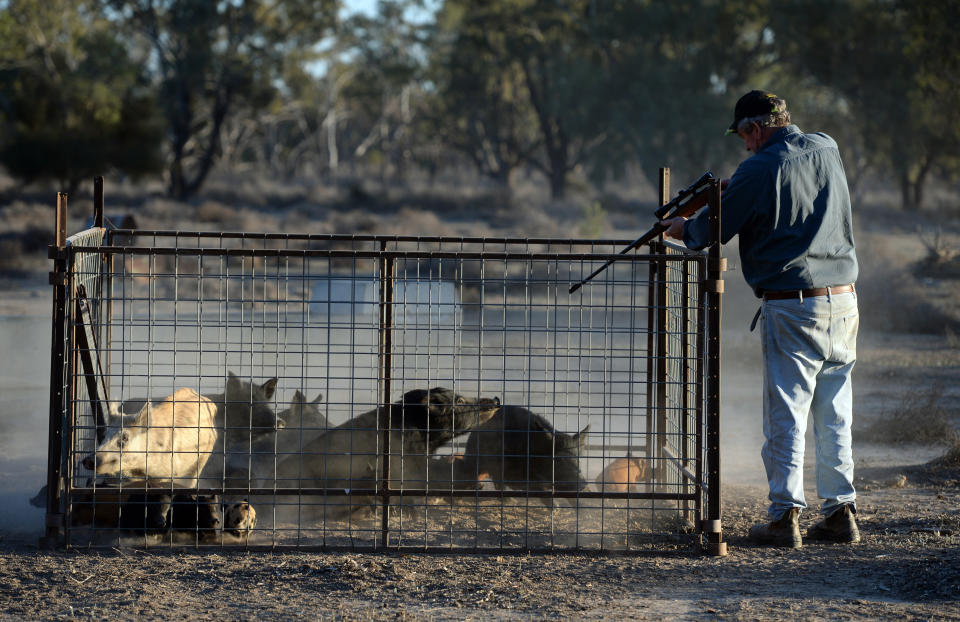Shocking footage highlights Australia's $100 million feral pig problem
Australia is no stranger to the havoc that can be wrought by introduced species, but new footage that highlights the extent of the country’s wild pig problem still might come as a shock.
A video posted to Facebook this month shows the incredible result of baiting and trapping programs carried out in rural areas as locals try to deal with the destructive feral populations.
The video, taken in the Warialda area in northern NSW, shows 148 wild pigs who were reportedly caught in a trap in a single night.
It’s estimated that Australia currently has up to 24 million feral pigs, mostly in the northern part of the country, according to Matthew Gentle, Principal Scientist for Invasive Plants and Animals Research at Biosecurity Queensland.
“Feral pigs are recognised as a destructive, exotic pest species in Australia, particularly in north-eastern areas where pig populations are widespread and can reach high densities,” he told Yahoo News Australia.

“Scary to see so many from just one night’s trapping,” wrote one Facebook user who watched the video.
“I am happy to see these captured but sad to acknowledge that these will just go into a hole in the ground. I am amazed that the average age is so young,” said another.
Despite being classified as a pest, some of the more than 238,000 viewers expressed sadness about the fate of the animals.
“Some of the comments are so far from reality it makes me mad. These animals are not native! They have been allowed to become wild because of us!” commented one user.
Feral pigs costing Australia more than $100 million
Across the Australian agricultural sector, the annual cost of pig impacts has been estimated as being in excess of $100 million.
Biosecurity Queensland, part of the state government’s Department of Agriculture and Fisheries, is responsible for researching and supporting effective interventions for the management of feral pig populations in the state.
A variety of control techniques are available to reduce pig populations, including poisoning, aerial and ground shooting, trapping and hunting, Mr Gentle said.

“Due their omnivorous diet and destructive feeding habits, feral pigs are responsible for damage to agricultural crops, native plant and animal communities, soil structure and infrastructure such as fencing and irrigation,” he said.
“Feral pigs are also known predators of various native invertebrates, reptiles and amphibians, and can also be a significant predator of livestock including goat kids and lambs.”
The first record of pigs in Australia is of 49 hogs arriving with the first fleet in 1788. The animals were not securely housed and subsequently escaped into the surrounding areas.
Fast forward to today and Australia’s vast land - particularly in the northern reaches - is teeming with wild pigs. Populations can fluctuate greatly, increasing rapidly under favourable conditions, but they can also decline during drought and less favourable periods.

Their huge numbers have made them a popular target among hunters.
Such is the extent of their numbers that a recent school fundraiser was held in Queensland that involved a contest where pig hunters competed for who could bag the heaviest boar and the most colourful pig, among other categories.
On competition day, four-wheel drives and utes lined up to have their entries weighed across nine categories, the ABC reported Tuesday.
After all the festivities, the pigs were trucked to a crocodile farm near Rockhampton and made into mince for baby crocodiles.
Do you have a story tip? Email: newsroomau@yahoonews.com.
You can also follow us on Facebook and Twitter, download the Yahoo News app from the App Store or Google Play and stay up to date with the latest news with Yahoo’s daily newsletter. Sign up here.



